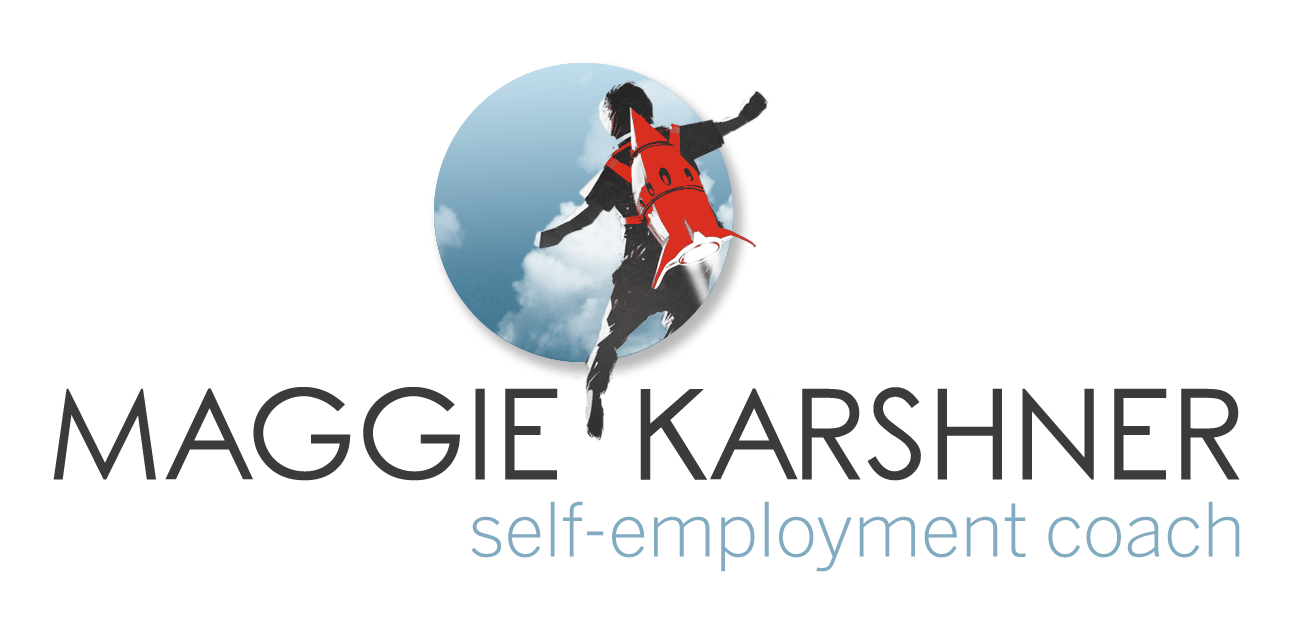5 Things that Help Others Promote Your Blog on Social Media
/Photo by Glenn Carstens-Peters on Unsplash
You’re diligently writing your blog posts, and people are reading them, but how do you get MORE people reading them? Going viral might seem even more magical than winning the lotto, but there are things you can do to help your posts get shared more on social media. Similar to how you’ll never win the lotto if you don’t buy a ticket, your blog posts will never be shared if it’s not easy for folks to share them. Here are the top 5 things you can do to help others do the work for you, and share your stuff on social media.
1. You share your blog posts to social networks
You are the start of the “going viral” process. You can’t be the wallflower waiting for someone to ask you to dance. Sure, it’s a nice dream that your blog posts will be discovered through no effort of your own and some famous person will find them and share them to all the other social media big-wigs and you’ll magically go viral, but that’s not how this works. You need to start the social sharing process. If you want to go viral on Facebook, then you need a Facebook account and you need to share your blog posts on Facebook. Likewise for all the other social networks.
Beginners: tackle one social network at a time
For all of you who just went down the rabbit hole of panic as you consider how many different social networks there are: Take a Breath. (no, really, I’ll wait. Breathe. … ) Doing a good job on one social network is more effective than doing a poor job at a bunch of them. So pick one, just one. It should be the one that seems least impossible for you to understand. If they’re all equal, then the one you think your ideal client is most likely to be on. Got one in mind? Great! Go start an account, start making friends/followers/connections/whatever, read up some about how that social network works, and share your blog posts there.
Advanced? Post to all your social networks at the same time
For those of you who are fluent in more than one social network, you’re facing a different problem. Sharing your freshly published blog post to each and every one of your social networks takes time – precious, precious time! This can be streamlined! Tools like Hootsuite and Buffer allow you write one post that gets shared across all your social media accounts (plus you can plan them in advance, and schedule them to post automatically!) These tools are a must have for managing multiple social media accounts! (And all the features come free, just only on a limited number of social networks.)
On Hootsuite you can further automate the social share process by setting up your blog’s RSS feed to auto-post. This means that all you have to do is hit “publish” on your blog, and then Hootsuite will share that blog post to any social network you’ve set it up for. Check out Hootsuite’s instructions for how to get this set up, or if you’re on Wordpress there’s a simpler way to publish your blog post to social media.
Don’t forget to Reshare!
The internet has the attention span of a goldfish, so don’t hesitate to share old blog posts. If you haven’t shared a post in a month or two, then it’s fair game to share it again! Just make sure you’re posting old blog posts as frequently or less frequently as you’re releasing new blog posts.
2. Equip your website with Share buttons
All the major website platforms have built in “Share” buttons and “Find me on” buttons. Both are important but they serve slightly different functions, and you have to make sure you set them up!
“Find me on” buttons are typically at the top of every page, on the side bar of every page, or rarely, on the bottom of every page. They link to your account on each social network and let the clicker follow you on that social network. This means that they’ll see what you post to that social media without having to return to your website. “Find me on” buttons only include the social networks that you have accounts on.
“Share” buttons are typically found at the bottom of blog posts, or sometimes the bottom of a webpage. They allow the clicker to share the content of that page from their own social media account. This does not mean they’re following you and will see your other stuff. Instead, it means they’re sharing your blog post to all their friends. (And that’s super helpful when you want your blog post to go viral!) “Share” buttons can include social networks that you don’t even have an account on!
Both “Find me on” and “Share” buttons are important for your social media presence, so you’ll probably want to enable both. The process for that is different depending on what platform your website is built on. Rather than write out instructions for how to set these up on all the different website platforms, here are links to each platform’s existing documentation on how to do this:
- SquareSpace
- “Find me on” they call social icons
- “Share” buttons
- Wix
- “Find me on” is called the social bar
- “Share”
- Weebly
- “Find me on” – requires getting a free app from the app-center. Try one of the following:
- “Share” – requires getting a free app or embedding some code. Here are two app options:
- Wordpress
- “Find me on” is called a follow button
- “Share”
If you don’t see your website platform represented here, please contact me and I’ll add links for that platform as well!
3. Provide an image optimized for Instagram
Instagram is a social network that’s all about the pictures – pretty, pretty, square pictures. If your blog post doesn’t have any pictures, then it can’t be shared on Instagram. Even if you’re not on Instagram, it can be beneficial to allow others to share your stuff on their favorite social media platform.
So what would inspire an Instagrammer to share a picture they find on your site? First of all, it has to be an attractive, square image. If your pictures are ugly or don’t fit in the square box, they won’t be shared. The picture also needs to stand alone; the image’s value should be clear from the image alone and shouldn’t need the blog article to give it context. In other words, if I’m scrolling along on Instagram and see this photo, I’ll think “oh, I want to know more about that” and NOT “why am I looking at this image?”
If your blog is about food or fashion it might lend itself very easily to pretty pictures. You’ll just need to make sure at least one picture is the 1080 x 1080 pixels that Instagram loves. It’d also be helpful to use a simple app like Canva or Over to add your company name, logo or URL to the image.
For blogs about less visual pursuits it can be tricky to figure out how to find an image that relates to your blog post. Here are three strategies, choose one, or try them all:
Title Over Picture
Find free stock photography (from Pexels or Unsplash) that relates to the feeling or content of the blog post. Then use a free app like Canva or Over to put your title on top of that picture. Take some time to make sure the whole thing looks nice. Remember, Instagram is all about pretty pictures!
Inspirational Quote Over Picture
Similar to the previous strategy, you could pull a quote from the blog article and put that on top of free stock photography. Quippy, inspirational sayings have their own market on Instagram. But remember that it should still look nice!
Diagram Or Mini Infographic
If your article lends itself to a simple diagram or short infographic, that’s a great way to share what your blog article is about on Instagram! Free tools like Canva or Venngage can help you design the diagram/infographic. Remember to add your company name, logo or URL to the image to ensure viewers know the source and can find the full blog article.
4. Make Your Blog Pinterest Friendly
Similar to Instagram, Pinterest loves its visuals. Pinterest allows for a longer image format and lends itself more naturally to infographics. While any image that’s shareable to Instagram can also be shared to Pinterest, it can be helpful to make an image optimized to Pinterest, especially if your blog speaks the dreamers and crafters that hang out on Pinterest.
You not only want the image to look nice, but you also want it to have that “pin it” or “save” branded logo in the upper left corner! If a pinner sees that logo, it reminds them that they could save that in Pinterest in one easy click. If you don’t have that logo, then saving a webpage as a pin is a multi-step process.
Making your blog Pinterest friendly is different depending on what platform your website is built on. Again, rather than write out a ton of instructions, here are links to each platform’s existing documentation on how to do this:
If you don’t see your website platform represented here, please contact me and I’ll add links for that platform as well!
5. Help your blog be Twitter friendly with “Tweet this” links
Similar to making it easy for Pinners and Instagrammers to share your blog post, you can make it easier for Twitterers to share your post. Essentially, you identify a quote or two from your blog post and then highlight them as tweet-able quotes on your blog page. Any Twitter user reading your blog post simply needs to click the “Tweet This” link and that quote will go out as a tweet from their account.
To set this up, first you’ll need a published blog article, and a 280 character or less quote from that blog article. Here's how to get a "Tweet this" link on your blog post:
- Navigate your favorite web browser over to Click to Tweet and set up your free account by linking to your twitter account.
- Paste your quote into the “Message you would like tweeted” box.
- Click the “Generate New Link” button
- Copy the Embed Code
- Add the Embed Code into your blog article:
- On Squarespace – paste it into a code block
- Wix – paste it into an HTML Code element
- Weebly – paste it into the Embed Code Element
- Wordpress – use the HTML editor instead of the visual editor or use the Click to Tweet plugin
- Save/Publish the updated version of your blog article.
Advanced Click to Tweet Skills
To help your tweeted quotes make the biggest impact, I think it’s helpful to include a link back to the blog article you’re quoting from. It’s as simple as including the web address in the “Message you would like tweeted box.” Of course, with that limited character count, it’s helpful to shorten your web address with a free service like Bitly. This will allow the quote to easily link back to the blog post it came from.
You can also relatively easily manually tweak the embed code so that it reads just how you want it. Let me diagram what you’re looking at in the code:
- That red URL with the arrow pointing to it links to Click To Tweet and you don’t want to edit that.
- All the grey text can be edited, and the edits will only appear on your website. I like to change two things:
- the “Tweet:” at the beginning to “Tweet It:” at the top grey arrow.
- I like to remove the Bitly URL I added, so that link only appears in the tweet and not on my website. Bottom grey arrow points to where this would appear in the tweet.
5 places to start, but so many possibilities!
So there you have it: there are 5 things that help others promote your blog on social media. Clearly there are many other ways to promote yourself on social media and many other ways to promote yourself in general. I'd love to help you identify strategic methods for growing your business, whether that's via social media or through other means. My one-on-one coaching comes with a free initial session so don't hesitate to contact me an get started now!










